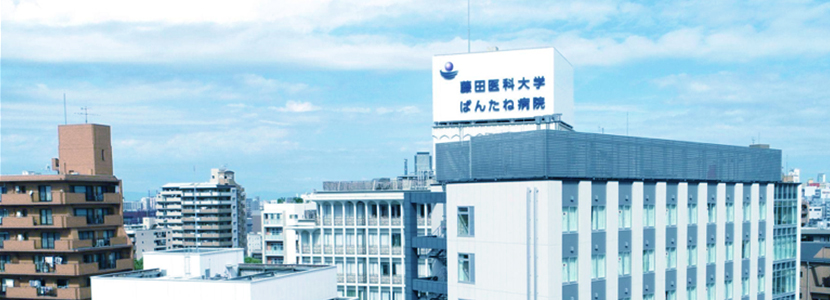Fujita Health University Bantane Hospital is a 370-bed acute care hospital that provides safe and advanced medical care as one of the teaching university hospitals. We are building a system to accept patients throughout the day and year by continuing a seamless rehabilitation. As a front-line hospital rooted in the community, we treat a wide variety of diseases. In addition, we are constantly learning the latest findings and conducting cutting-edge researches while striving to acquire knowledge and skills useful for daily clinical practice as a university hospital. Forty rehabilitation staff members are committed to helping all patients reach their full potential and live vibrantly with hope and smiles.
Features of rehabilitation at Bantane Hospital
・Dysphagia rehabilitation
We provide evaluation and treatment for dysphagia through a transdisciplinary approach, aiming to enable all patients of oral feeding. We investigate the problem and its causes responsible for the inability to eat, and discuss treatment and training methods with the dysphagia rehabilitation team to prevent aspiration pneumonia and malnutrition, and to maintain and improve the quality of life.

・Spastiity treatment
For patients with spastic hemiplegia, paraplegia, and tetraplegia, we provide botulinum-toxin type-A injections and nerve blocks after transdisciplinary evaluation and clarification of the problem.
・Cardiac rehabilitation
We have three instructors certified by the Japanese Society for Cardiac Rehabilitation, and we actively provide early rehabilitation after heart failure or acute myocardial infarction. We promote comprehensive cardiac rehabilitation with a transdisciplinary approach from the acute stage. If necessary, we evaluate the patient using cardiopulmonary exercise stress test (CPX) and prescribe exercises based on the test findings.

・Neuro rehabilitation
We provide advanced rehabilitation based on the theories of motor control and motor learning. We have introduced the latest rehabilitation devices and equipment, including devices for electrical stimulation and peripheral magnetic stimulation, a low-floor dual treadmill, and a three-dimensional gait analysis system.
・Electromyography
Nerve conduction studies and needle electromyography are performed to evaluate nerve dysfunction, muscle dysfunction or problems with nerve-to-muscle signal transmission and to determine the treatment plan.


